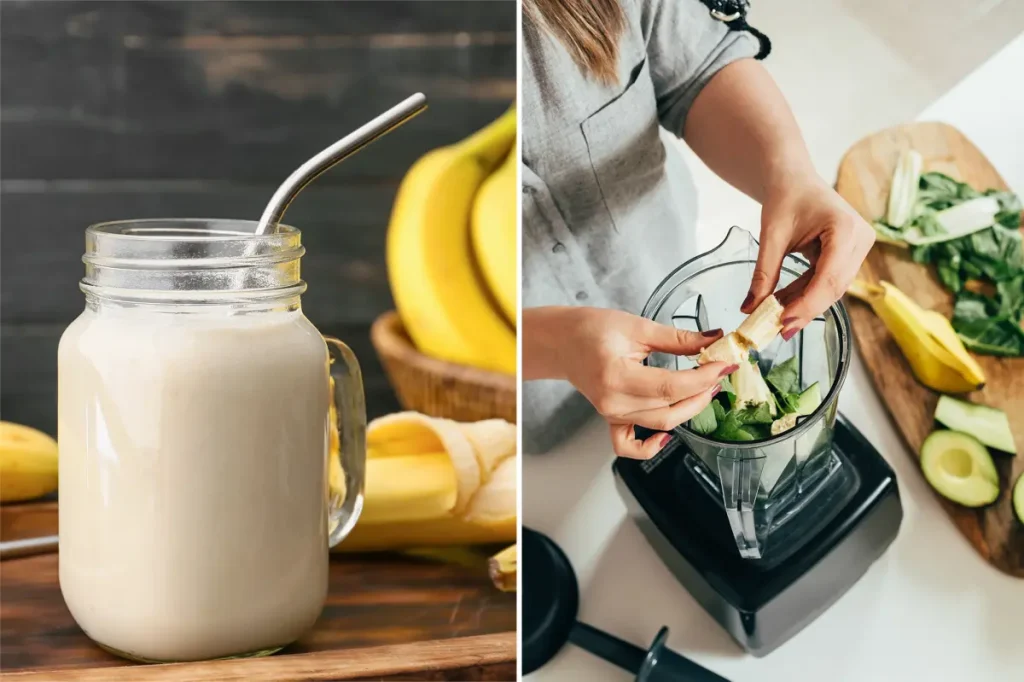Bananas May Block Berry Benefits in Smoothies: New Research Reveals Surprising Interaction
In the quest for healthier eating habits, smoothies have become a staple for many health-conscious individuals. These blended beverages often combine various fruits for what seems like a nutritional powerhouse in a glass. However, recent research from the University of California, Davis has uncovered an unexpected interaction that might make smoothie enthusiasts rethink their favorite recipes. The study, published in the journal Food & Function, reveals that adding bananas to berry smoothies could significantly reduce the absorption of beneficial compounds found in berries by up to 84%. This finding challenges the common assumption that combining fruits in smoothies simply adds up their nutritional benefits, suggesting instead that certain combinations might diminish the health advantages we seek from these popular drinks.
The culprit behind this nutritional interference is an enzyme called polyphenol oxidase (PPO), which is abundant in bananas. When bananas are blended, this enzyme reacts with oxygen and begins breaking down flavanols – beneficial plant compounds found in berries, grapes, apples, and cocoa that are associated with improved heart and brain health. Lead researcher Javier Ottaviani explained that this process continues even during digestion, leaving fewer compounds for the body to absorb. “While we anticipated that PPO might influence the flavanol content and absorption from smoothies, we were surprised by how quickly and significantly the addition of just one banana reduced flavanol content in the smoothie and, consequently, the levels of flavanols in the body,” Ottaviani noted. Perhaps even more surprising was the discovery that consuming bananas alongside flavanols, even when not blended together, still reduced flavanol levels in the body.
The research involved a small clinical study where volunteers consumed two different smoothies – one made with banana and another with mixed berries, which are naturally low in PPO. Blood and urine samples clearly showed reduced flavanol absorption from the banana smoothie compared to the berry version or a flavanol supplement. This enzymatic reaction is the same process responsible for the browning of fruits after they’re cut and exposed to air. The findings suggest that to maintain the health benefits of flavanols, it’s best to avoid combining flavanol-rich foods with those that quickly brown after cutting, such as bananas, avocados, and beet greens. Instead, the researchers recommend pairing flavanol-rich fruits like berries with low-PPO ingredients such as pineapple, oranges, mangoes, or yogurt to maximize nutritional benefits.
Despite these findings, experts emphasize that bananas remain a nutritious fruit with many health benefits. “Bananas remain a great fruit and a great option for smoothie preparation, but not if aiming to maintain the flavanols in your smoothie,” Ottaviani added. The Academy of Nutrition and Dietetics recommends consuming between 400 and 600 milligrams of flavanols daily for optimal health benefits. Dr. Parth Bhavsar, a board-certified family medicine physician not involved in the study, suggests a balanced approach: “Moderation and rotation are much more relevant. If you enjoy your bananas in a smoothie, go for it. But you could switch between making berry and banana smoothies.” This practical advice recognizes both the new findings and the reality that most people enjoy variety in their diets.
The UC Davis study highlights a broader nutritional concept that many people may not consider – that food combinations can significantly impact nutrient absorption, sometimes in counterintuitive ways. Dr. Bhavsar points out several other common food pairings that can interfere with nutrient uptake: tea or coffee can block iron absorption, calcium can compete with iron for absorption, raw cruciferous vegetables may hinder iodine uptake, and very high fiber intake can limit mineral absorption. “Although small in each instance, they can add up in patterns over time,” he explains. This perspective suggests that nutritional science extends beyond simply calculating the vitamins and minerals in individual foods to understanding how they interact when consumed together.
This research, conducted in collaboration with scientists from the University of Reading in England and King Saud University in Saudi Arabia, was funded by a research grant from Mars, Inc., which has been a frequent collaborator in cocoa flavanol research. Ottaviani serves as the director of the Mars Edge Core Laboratory. While this connection might raise questions about potential conflicts of interest, it’s worth noting that the findings have practical implications beyond commercial interests. The researchers suggest that these results could inspire further investigations into how food preparation methods affect nutrient absorption – an area that remains relatively unexplored compared to research on individual nutrients. For everyday consumers, the takeaway isn’t necessarily to abandon banana-berry smoothies altogether but to be more mindful about food combinations and perhaps alternate between different smoothie recipes to ensure a diverse intake of beneficial nutrients. This study serves as a reminder that nutrition is complex, and sometimes even seemingly healthy choices can benefit from a more nuanced approach.














